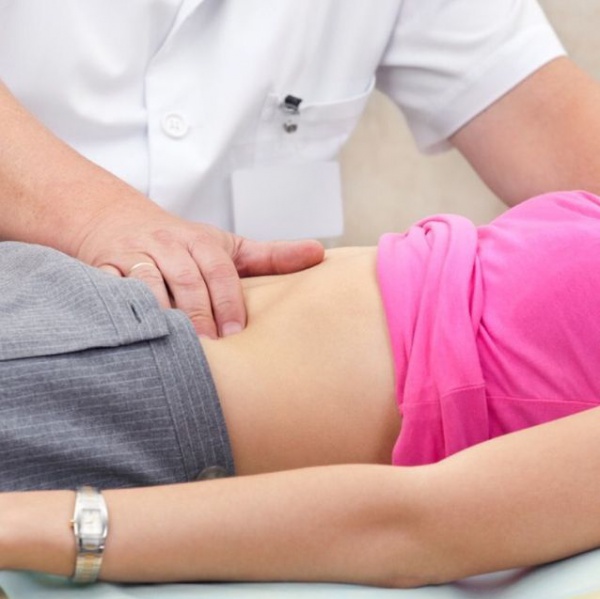
Recovery of Gastrointestinal Motor Function – the Key Factor of Intestinal Microbiome Normalization
28.10.2015
Valenta organized a scientific and practical symposium within the XXI Russian Gastroenterologic Week, where experts presented their analysis of influence that intestinal microbiome exerts on intestinal motor function, discussed the role of microbiome disorders in the development of gastrointestinal functional disturbances, and potential methods of treatment.
The gastrointestinal tract is home to more than 1,000 various kinds of bacteria which total weight exceeds 1 kg — their community is considered to be an independent organ, a microbiome. The number of bacteria contained in microbiome is 10 times greater than the number of cells of a human body; its composition is shaped during the first days of life and remains unique till the life end. Microbiome influences the status of the individual’s organs and systems; it participates in metabolic, immune, protective and digestive processes. The basic functions of gastrointestinal microbiome are maintenance of intestinal mucous resistance to pathogenic and opportunistic bacteria, vitamin synthesis, metabolism of bilious acids, participation in activation of protective immune response, and regulation of intestinal motor function.
Small Intestinal Bacterial Overgrowth Syndrome (SIBOS) is one of clinical variants of microbiome imbalance and is characterized by the increase of amount of normal intestinal bacteria and/or presence of large-intestinal bacteria in the small intestine1, which provokes the development of functional gastrointestinal disorders. Clinical displays of SIBOS can be divided into local symptoms (abdominal pains, flatulence, diarrhea, body weight loss, abdominal rumbling) and systemic displays caused by intestinal bacteria migration beyond the intestine bounds, or disturbance of vitamin, micro- and macronutrient metabolism, etc.
E.P.Yakovenko, D.M.Sci., Professor at the Department of Gastroenterology and Dietetics of PVMEF at SBEI HPE Pirogov RNRMU: «Prevalence of SIBOS accompanying GI diseases makes 70% to 97%2. Normalization of intestinal bacteria composition and recovery of small intestine motor function in 52-73%3 of patients is accompanied by termination of clinical symptoms. Hence, the correction of microbiome composition and GI motor function disorders positively influences the course of SIBOS and improves the patient’s condition.» The principles of treating patients with SIBOS are: treatment of the main disease, recovery of motor functions of normal small and large intestines, normalization of intestinal bacteria composition, nutrition support, and termination of structural and functional disorders of organs involved in the pathological process due to bacteria migration beyond the intestine bounds.
The majority of patients with SIBOS display a variety of combinations of GI motor function disorders in different parts of digestive tract, which creates difficulties in choosing adequate therapy: to normalize motor disorders you need spasmolytics in one zone and prokinetics in another. Medicines able to normalize motor function of intestines, independently on their initial status, and influencing the increased sensitivity of GI nerves are potentially effective for termination of these disturbances, as well as of pain syndrome, stool disorders and flatulence connected with those disorders.
A provisional plan of treating patients with SIBOS contains three components: first, it is necessary to recover normal intestinal microbiome composition applying antibacterial therapy and the subsequent prescription of probiotics; secondly, to prescribe medicines normalizing intestinal motor function; and simultaneously, it is necessary to recover vitamin, macro- and micronutrients balance (В1, В2, В6, РР vitamins injections), etc.
- 1 E.A. Belousova. Small Intestinal Bacterial Overgrowth Syndrome within the General Concept of Intestinal Dysbiosis. View on the problem //Farmateka, 2009, 2.
- 2 V.M.Bondarenko, T.V.Matsulevich. Intestinal Dysbiosis as Clinical and Laboratory Syndrome: Current Status of the Problem: Manual for Doctors. - М: GEOTAR-MEDIA, 2007.
- 3 Lacy BE, Weiser K. Gastric motility, gastroparesis, and gastric stimulation. Surg Clin North Am 2005; 85: 967–87, Lin Z, Forster J, Sarosiek I, McCallum RW. Treatment of diabetic gastroparesis by high–frequency gastric electrical stimulation. Diabetes Care 2004; 27: 1071–6.
